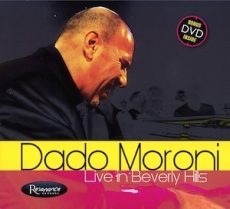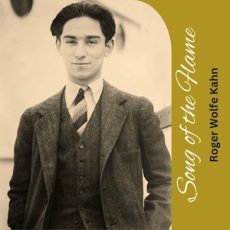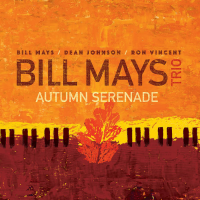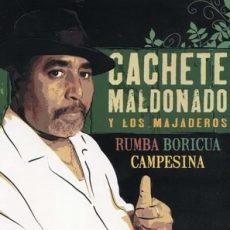
Daily Dose Of Jazz…
Edgardo “Dado” Moroni was born October 20, 1962 in Genoa, Italy and started playing piano at age four. A self-taught musician, by his mid-teens he was playing professionally around Italy and by age 17 had recorded his first album.
Throughout the 1980s Dado worked mostly in Europe and played a long stint as part of former Duke Ellington bassist Jimmy Woode’s trio at Widder Bar in Zurich, Switzerland. At 25, in 1987 he served as a juror at the prestigious Thelonious Monk International Piano Competition.
He moved to the U.S. in 1991 and became part of the New York jazz scene. He appeared regularly as a leader and sideman at Blue Note, Birdland, and the Village Vanguard. During this period he recorded several CDs.
Moroni has played with Freddie Hubbard, Clark Terry, Zoot Sims, Harry “Sweets” Edison, Ray Brown, Ron Carter, Oscar Peterson, Ahmad Jamal, Hank Jones, Niels-Henning Ørsted Pedersen and Alvin Queen.
Based in Italy, Dado continues to perform worldwide. In 2007 he won the Italian Jazz Awards as Best Jazz Act. 2009 had him named Best Italian Jazz Pianist in the Top Jazz referendum sponsored by Musica Jazz magazine. The following year he was appointed Professor of Jazz Piano at Giuseppe Verdi Conservatory of Music in Turin, Italy.
Pianist, composer and educator Dado Moroni continues to perform, record and teach.
More Posts: composer,educator,history,instrumental,jazz,music,piano

Daily Dose Of Jazz…
Roger Wolfe Kahn was born on October 19, 1907 in Morristown, New Jersey, into a wealthy German Jewish banking family. He began studying the violin aged six and is said to have learned to play eighteen musical instruments before starting to lead his own orchestra in 1923, at the age of only 16. His interest in music led the ten year old to buy a ukulele with instructions on how to play. The ukulele turned his mind toward violins, pianos, banjos and jazz orchestras.
By sixteen he rejected college, formed his own booking agency and organized a paying band. He installed it at the Knickerbocker Grill in New York. Self-taught, he could play every instrument in the outfit, and his favorite instruments were the piano and saxophone. By the time he reached nineteen, he had eleven orchestras on his books that played in resorts and hotels from Newport, Rhode Island to Florida. His success enabled him to pursue his passion for composing music and aviation.
Kahn appeared in a short film, hired many famous jazz musicians and singers of the day to play and sing in his band, especially during recording sessions. They were Tommy Dorsey, Morton Downey, Joe Venuti, Eddie Lang, Artie Shaw, Jack Teagarden, Red Nichols, Libby Holman, Gertrude Niesen, Franklyn Baur, Dick Robertson, Elmer Feldkamp and Gene Krupa.
Early on in his career he made several recordings under the name Roger Wolfe Kahn and His Hotel Biltmore Orchestra. He and his Orchestra recorded four takes of the song Rhythm Of The Day for Victor Records and for some reason Victor chose not to release any of them. Undeterred, he wrote the song Following You Around, and arranged the score of his stage musical Rhapsurdity and Hearts and Flowers.
During his career Roger made recordings for Victor, Brunswick and Colubia records, fronted several fashionable New York night clubs and owned several clubs, one beingLe Perroquet de Paris, opened in New York in November 1926 with a five-dollar cover charge. In 1938, the Kahn Orchestra reformed to perform a special one-off concert, in what could have been the Kahn Orchestra’s last concert.
Roger Wolfe Kahn, who was a composer, bandleader and an aviator, died of a heart attack in New York City on July 12, 1962.
More Posts: arranger,bandleader,composer,history,instrumental,jazz,music

Daily Dose Of Jazz…
Ron Vincent was born on October 18, 1951 in Warwick, Rhode Island. When he came of age he moved to Boston, Massachusetts in 1969 and attended Berklee College of Music, graduating in 1973. After touring the U.S. with different jazz groups, and spending three years in Kansas City, he settled in New York City in 1982.
Becoming a veteran of the New York City jazz scene he worked often as a sideman. Ron has recorded for GRP, Concord and Palmetto record labels, the latter where he has been producer and co-producer for a number of projects.
A member of the Gerry Mulligan Quartet and Mr. Mulligan’s Re-Birth of the Cool Tentet from 1989 to1996, recorded four CD’s with Mulligan and has also recorded with Phil Woods, Lee Konitz, Randy Brecker, Bob Brookmeyer, Bill Charlap, John Lewis, and Slide Hampton. Ron has appeared with Art Farmer, Karrin Allyson, Jimmy Heath, Rob McConnell, Rufus Reid and Dr. Billy Taylor.
As a leader, his own trio and quartet are active in the New York City area and his quartet has toured the U.S. and Europe. His educator hat has him representing Sabian Cymbals, and presenting workshops at over 80 colleges and universities. Vincent has been on the faculty of the Jamie Aebersold Jazz Camps and the Stanford Jazz Camp. In 1996 Ron received a National Endowment for the Arts grant for jazz performance.
Drummer Ron Vincent teaches percussion at Manhattanville College, leads two educational performing groups that appear at schools in the tri-state area and is involved in a Literacy Through The Arts program in NYC’s public schools.
More Posts: bandleader,drums,educator,history,instrumental,jazz,music

Daily Dose Of Jazz…
Herschel McWilliams was born and raised in Kansas City, Kansas on October 17, 1978. Growing up the son of musicians, a drummer father and pianist and vocalist mother, he was introduced to many musical influences at an early age.
He started learning piano at eight years old and alto saxophone at 10 years old. He joined the band in school and though he learned to play drums from his dad, saxophone became his instrument when he was in the fourth grade. In the 7th grade he stumbled upon Weather Report and Harry Connick Big Band albums. Having great teachers and musicians around him was an important influence on him throughout elementary and high school.
He started gigging the summer after he graduated high school with a community big band. They were working musicians and it was his first call he ever got before heading off to college. After college he has become a beacon of light for jazz in his hometown.
Saxophonist Herschel McWilliams serves on the Board of Directors for Kansas City Jazz Ambassadors, runs his own jazz website, and plays regular gigs in the jazz district of Kansas City as well as other venues in the area.
More Posts: bandleader,history,instrumental,jazz,music,saxophone

Daily Dose Of Jazz…
Angel ‘Cachete’ Maldonado was born in Santurce, Puerto Rico on Oct. 16, 1951 to a father who was a respected orchestra bassist. He began his musical studies with formal piano lessons, but had an early inclination to percussion and went under the tutelage of drummer Julio ‘Maco’ Rivera. His curiosity of Afro-Cuban music led him to the batá drums, and their religious and spiritual connotations, then to conga and bongo.
While on the island, he joined the popular band of Johnny El Bravo, then relocated to New York in the early 1970s. Once there he played with Carlos “Patato’ Valdés and Julito Collazo. This led him to become the featured bongo player with La Conspiración, then teamed up with pianist Larry Harlow. He remained for extensive tours of North and South America, and established his standing as a top tier percussionist. He performed with Eddie Palmieri, Louie Ramirez, Conjunto Libre, and Tipica 73, and recorded with Machito and Dizzy Gillespie.
Maldonado went on to play with Gato Barbieri, Weather Report, Freddie Hubbard, Jorge Dalto, Airto Moreira among others. In 1980 he started his seminal group Batacumbele, blending the Cuban songo beat with bomba and plena. Batacumbele had a compact but highly regarded recording output of five albums including a compilation disc. The release of the self-titled record was an instant hit and solidified his standing as a percussionist and bandleader.
Suffering a debilitating stroke in 2005, Cachete curtailed his performances which led to further complications. However, he regained much of his vibrancy and in 2010 Cachete Maldonado y Los Majaderos released Rumba Boricua Campesina to much acclaim on the island and in New York.
Percussionist Cachete Maldonado continues to lead his band at the local gigs and advance Afro-Caribbean music.
More Posts: bandleader,history,instrumental,jazz,music,percussion


